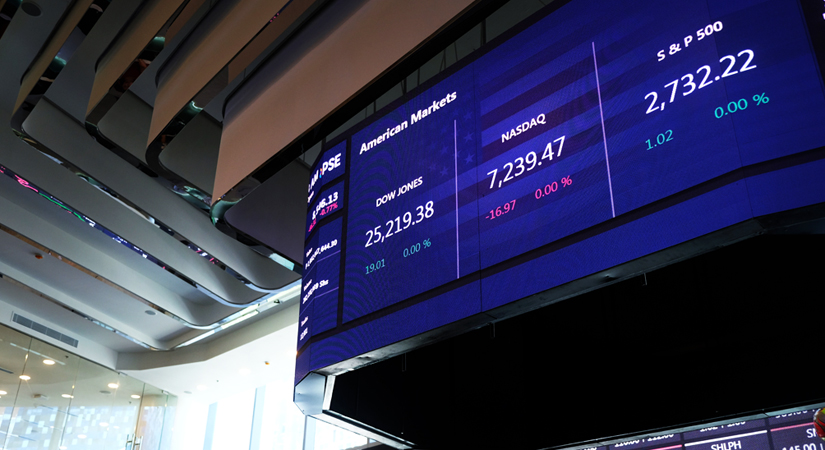STOCKS are expected to climb this week after the government eased quarantine restrictions in Metro Manila and its nearby provinces of Bulacan, Cavite, Laguna, and Rizal on the back of lower daily coronavirus cases in the country.
The Philippine Stock Exchange index (PSEi) went up by 32.96 points or 0.52% to close at 6,269.36 on Friday. Meanwhile, the broader all shares index declined by 7.02 points or 0.18% to end at 3,850.98. Week on week, the PSEi gained 10.65 points from its 6,258.71 finish on May 7.
AAA Southeast Equities, Inc. Research Head Christopher John J. Mangun said Friday was “the most interesting trading day due to the increased volatility” in the market. He said bargain hunters held off as they were expecting the weakness of the market after restrictions were extended until the end of the month.
“Buyers waited until selling pressure had subsided and prices were significantly lower, which coincidentally was right before trading ended,” Mr. Mangun said via e-mail on Friday. “Dismal economic figures, which were released [last] week, also contributed to the deterioration of the sentiment.”
President Rodrigo R. Duterte approved the recommendation of an interagency task force to place National Capital Region and the provinces of Bulacan, Cavite, Laguna and Rizal under a general community quarantine with heightened restrictions from May 15 to 31, presidential spokesman Herminio L. Roque, Jr. said in a statement on Thursday night.
Meanwhile, the country’s gross domestic product (GDP) fell by an annual 4.2% in the quarter ending March. This marked five consecutive quarters of GDP decline, marking the longest recession since the Marcos era.
“With the further easing of restrictions, we may see the market to recover somehow but it will continue its [volatility] after the release of strong US inflation figures last week,” Diversified Securities, Inc. Equity Trader Aniceto K. Pangan said in a text message on Saturday.
“Any [sustained] inflationary pressures from the US will affect the global market including the Philippines,” Mr. Pangan added.
The US producer price index (PPI) rose 0.6% in April after surging 1.0% in March, Reuters reported. In the 12 months through April, the PPI shot up 6.2%. That was the biggest year-on-year rise since the series was revamped in 2010 and followed a 4.2% jump in March.
Meanwhile, AAA Southeast Equities Mr. Mangun said the recent downward trend of the PSEi may continue “until investors gain confidence that the economy would roar back to life.”
“[It] will only happen once the public health threat has been neutralized, mainly by developing herd immunity through mass vaccination. The PSEi’s next major support is at 6,000 which it could test in the coming trading days,” he said.
“Despite the lower prices, we encourage investors to start taking positions as the potential long-term upside of prices outweigh the potential downside risks in the short term,” Mr. Mangun added. — Keren Concepcion G. Valmonte with Reuters

